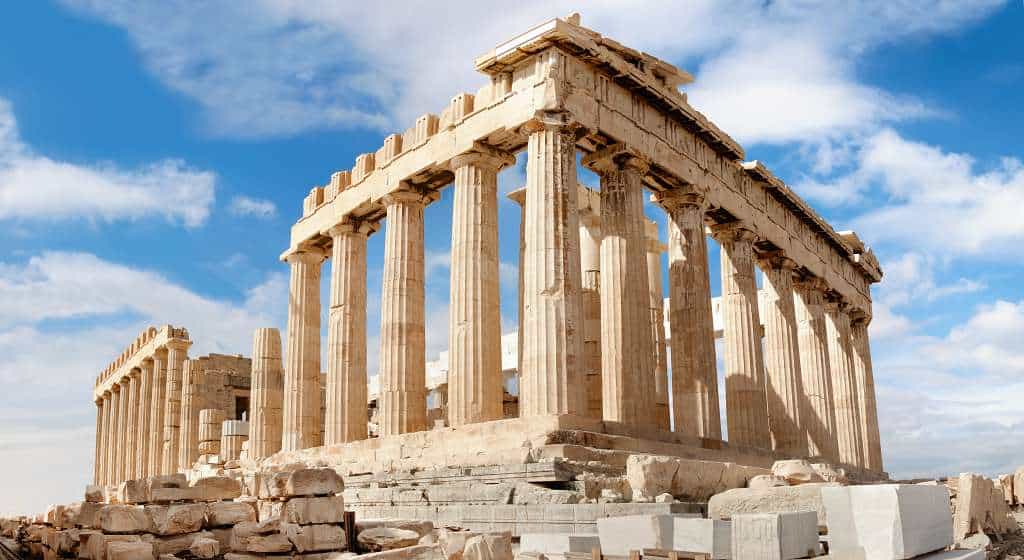Follow in the footsteps of countless other travelers, who have explored Classical and Roman Athens. Wear comfortable shoes, and simply wander where the mood takes you, marveling at the beauty of the various archaeological monuments, enjoying the serenity of quieter corners, and imagining the colorful bustle of daily life in those times.
Disclaimer: This post contains affiliate links. This means that should you click on certain links, and then subsequently purchase a product, I will receive a small commission.
Welcome to Ancient Athens…
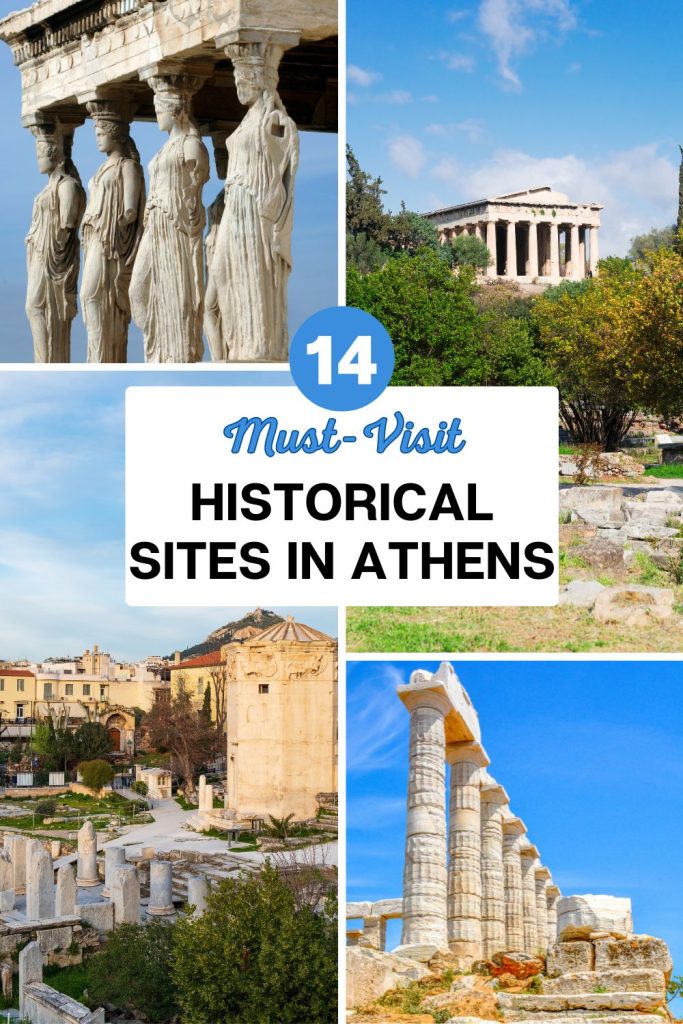
- 14 Must-See Historical Sites in Athens
- 1. Acropolis
- 2. Theatre of Dionysus
- 3. Odeon of Herodes Atticus
- 4. Hadrian's Library
- 5. Temple of Olympian Zeus (Olympieion)
- 6. The Arch of Hadrian (Hadrian’s Gate)
- 7. Panathenaic Stadium (Kallimarmaro)
- 8. Kerameikos Cemetery
- 9. Ancient Agora
- 10. Temple of Hephaestus
- 11. Stoa of Attalos
- 12. Roman Agora & Tower of the Winds
- 13. Athens Lysicrates monument
- 14. Temple of Poseidon, Sounio
14 Must-See Historical Sites in Athens
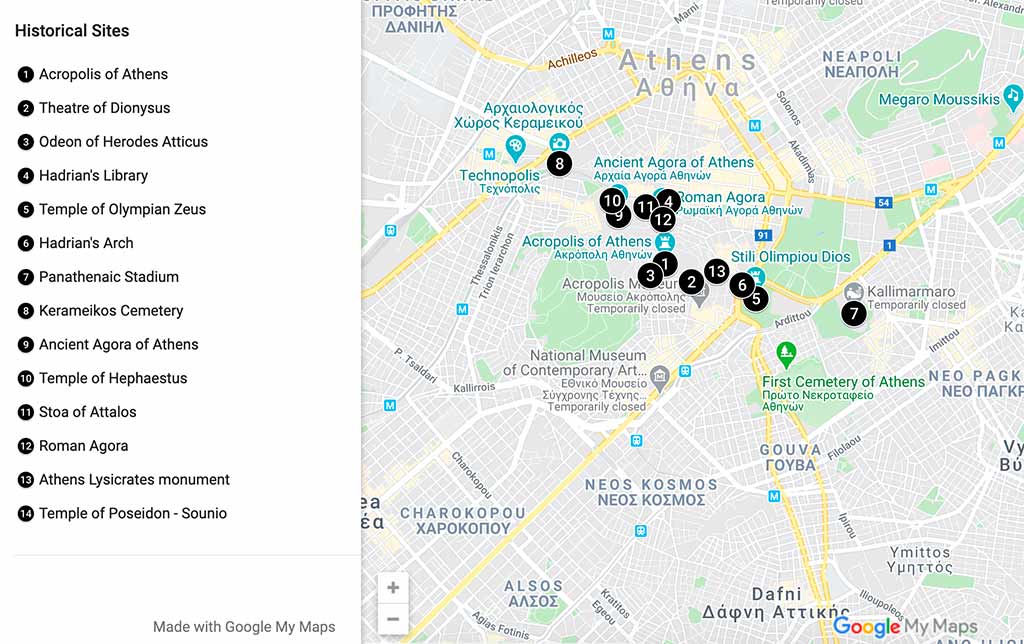
1. Acropolis
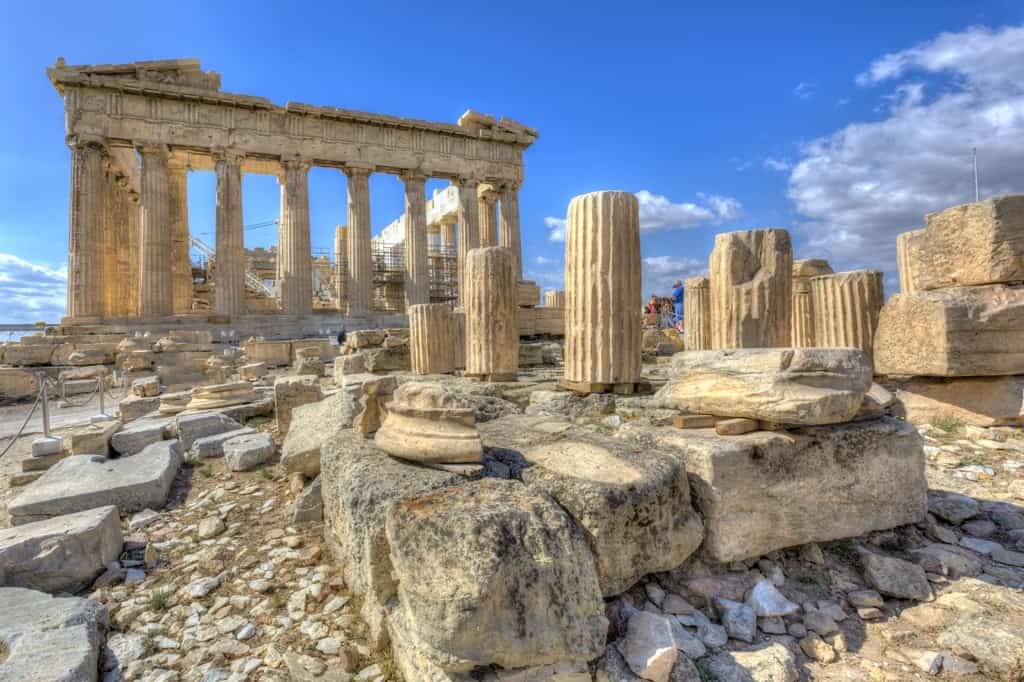
The Acropolis stands as an icon of the rich heritage of Athens and is Greece’s most famous and popular attraction. Built in the 5th century BC and dedicated to Athena, the goddess of wisdom and protector of the city, the Acropolis is an impressive citadel standing on a rocky outcrop and visible from most parts of Athens.
The building of the Acropolis was initiated by Pericles who wanted it to be the largest and most splendid building ever and it took 50 years for the work to be completed.
Here are my absolute favorite tours that include the Acropolis:
– If you are interested in a guided tour I recommend this No-Crowds Acropolis Tour & Skip the Line Acropolis Museum Tour by the company Take Walks which gets you in the Acropolis for the first viewing of the day. This way not only do you beat the crowds but the heat as well. It also includes a skip-the-line tour of the Acropolis Museum.
– Another favorite is the Mythology Highlights Tour. This 4-hour tour includes Athen’s most important sites; the Acropolis, the Temple of Olympian Zeus, and the Ancient Agora. Please note that it doesn’t include the entrance fee which is €30. It is a very interesting tour that combines Mythology and History.
2. Theatre of Dionysus
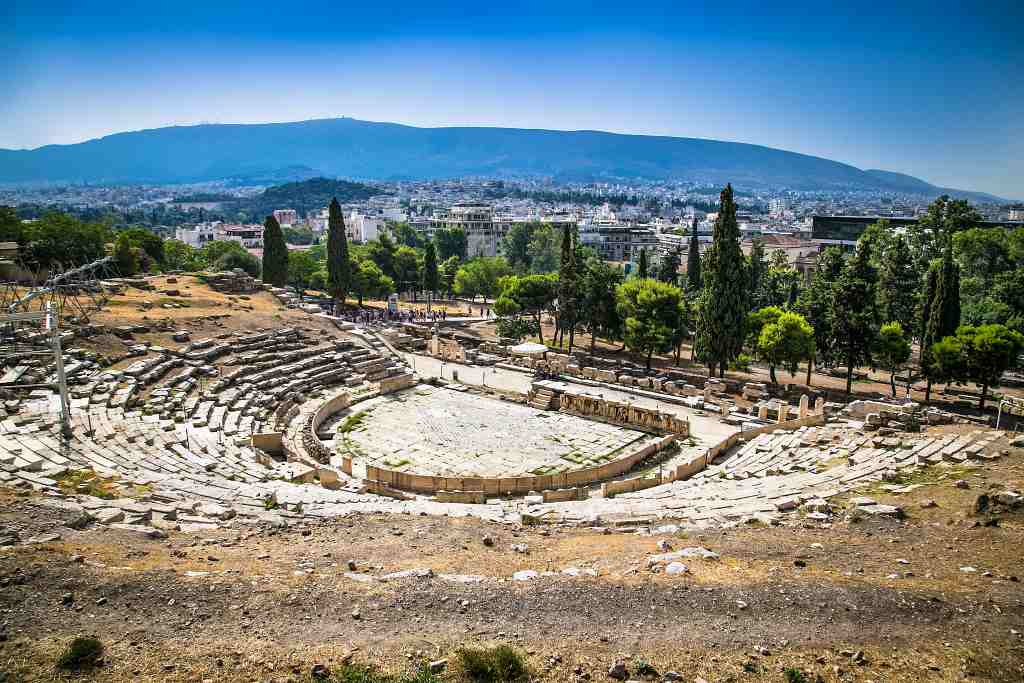
Situated on the southern slopes of Acropolis Hill stands the Theatre of Dionysus, dedicated to the god of wine. This was the world’s first theatre where all the Ancient Greek tragedies, comedies, and satyrs, written by such famous playwrights as Aeschylus, Euripides, and Sophocles, were first performed.
There were three male actors on stage, wearing elaborate costumes and masks and welcoming lively participation by the audience! The theatre could seat 16,000 people.
Tickets: Included in the Acropolis basic ticket and the combined ticket. See above for more information.
3. Odeon of Herodes Atticus
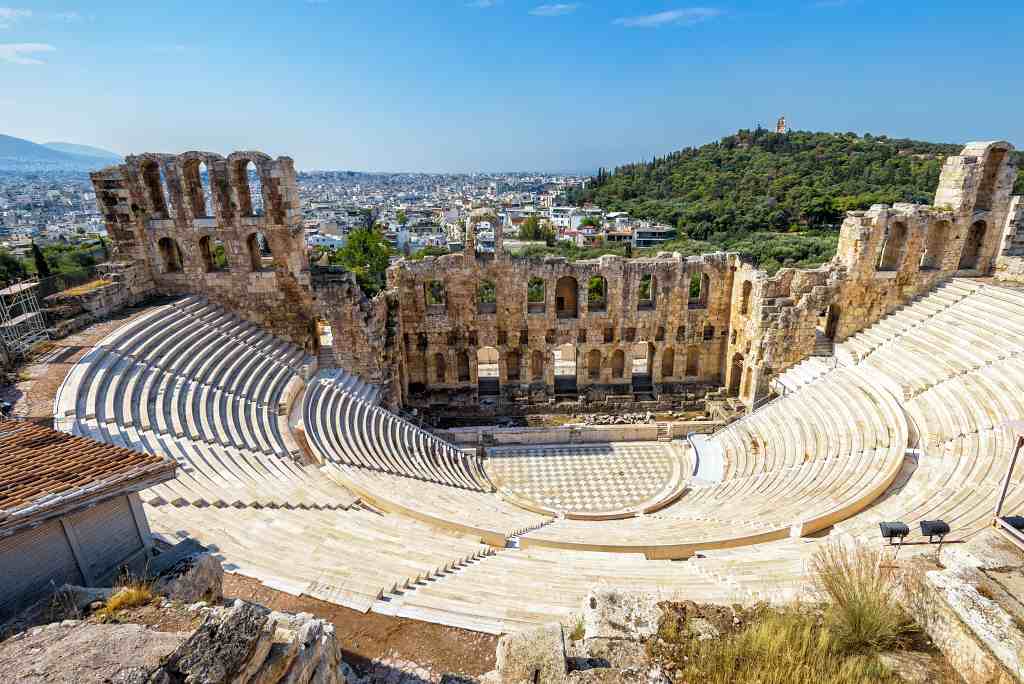
Nestling in a rocky hollow on the southwestern side of Acropolis Hill is the Odeon of Herodes Atticus, one of the world’s oldest and finest open-air theatres. Constructed in 161 AD, the theatre was funded by a wealthy benefactor- Herodes Atticus.
The theatre is still the main venue for the annual Festival of Athens in which many world-class performers take part. The only way to visit the theatre is to attend one of the many events held there.
4. Hadrian’s Library
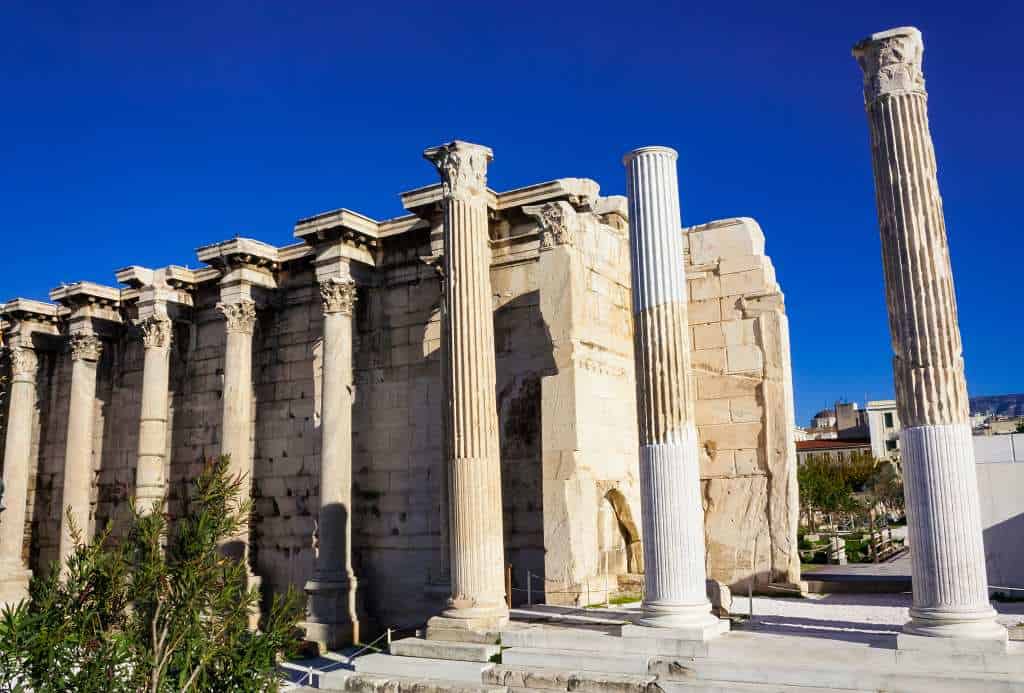
The largest structure to be built by Hadrian in the 2nd century AD was the library, which is situated on the north side of the Acropolis. Hadrian’s Library was built in marble as a typical Roman Forum in the Corinthian style. The library was lined with shelves for storing countless rolls of papyrus. Close by, there were several reading rooms and a lecture hall.
5. Temple of Olympian Zeus (Olympieion)
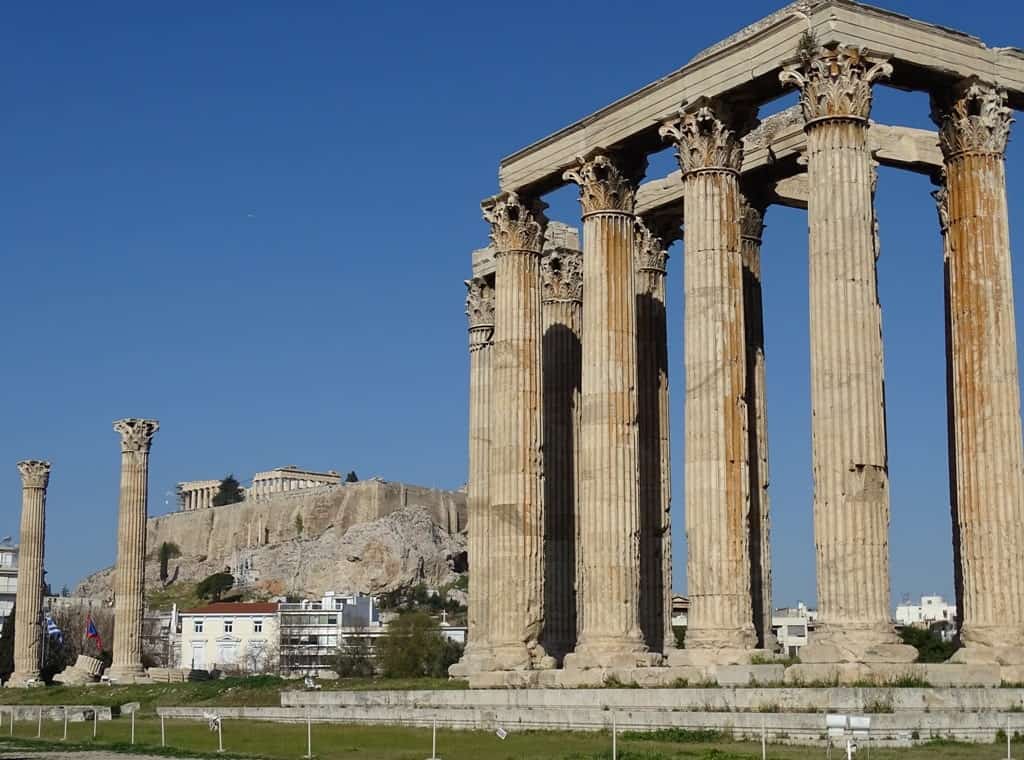
Work started on the construction of this temple in 174 BC, it continued for several centuries and was completed by the Roman Emperor, Hadrian in 131 AD. The temple was one of the largest ever built and its design included unusually tall columns.
There were double rows of 20 columns along each long side and triple rows of eight columns along each short side of the temple. Today, 15 of the columns remain standing. The Temple of Olympian Zeus stands to the southeast of the Acropolis, close to the River Ilissos.
6. The Arch of Hadrian (Hadrian’s Gate)
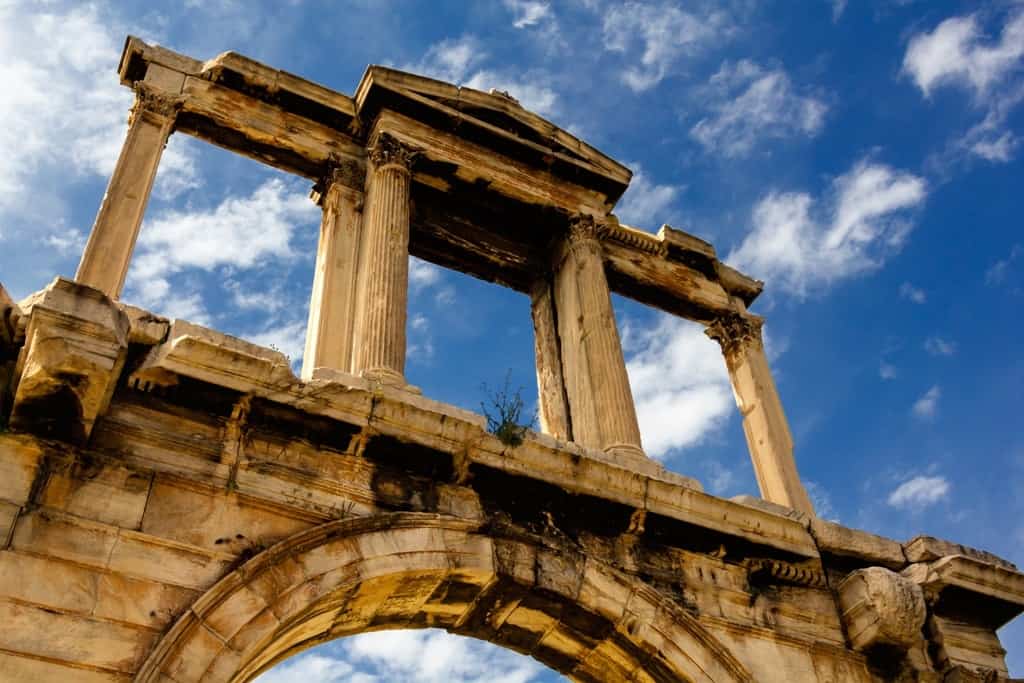
Built by the Roman Emperor, Hadrian in 132 AD, the archway was situated at the end of Amalias Avenue- the ancient road leading from the center of the city, This elaborate two-story archway was built in Pantelic marble to mark the boundary between the ancient part of the city and the new part. The archway also honored the arrival of Emperor Hadrian.
7. Panathenaic Stadium (Kallimarmaro)
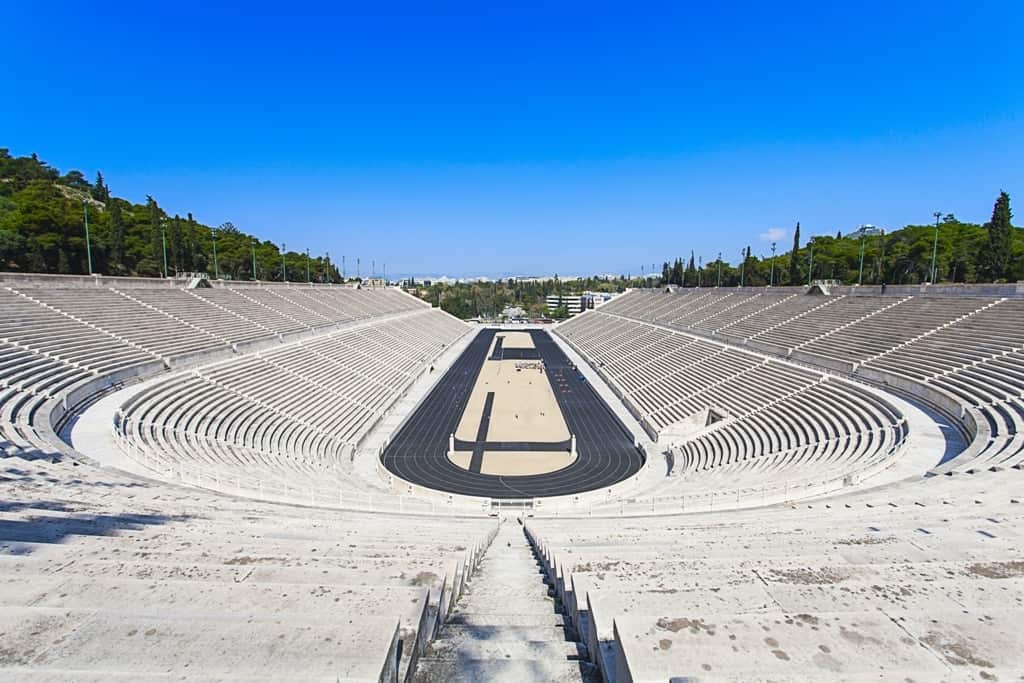
The stadium stands on the site of an ancient stadium that for years hosted the Panathenaia Festival with various games and track events for nude male athletes. The stadium was completely rebuilt by the Roman senator, Herodes Atticus, and by 144 AD had 50,000 seats. It is the only stadium in the world to have been built entirely from marble.
For centuries it lay abandoned but was excavated in 1869. In 1896, it was used for the opening and closing ceremonies of the first modern Olympic Games. In 2004, it was again used as an Olympic venue and nowadays marks the finish for the annual Athens Classic Marathon.
8. Kerameikos Cemetery

Peaceful, tranquil, and fascinating, Kerameikos Cemetery is situated close to the Acropolis and used to be divided by the ancient city walls. The cemetery was built in the 12th century BC and was used for the next thousand years. Wandering along the ‘way of the tombs’ you will see replicas of many tombs of prominent people in Athens who are buried there. There is a small, but interesting museum, close to the entrance.
9. Ancient Agora
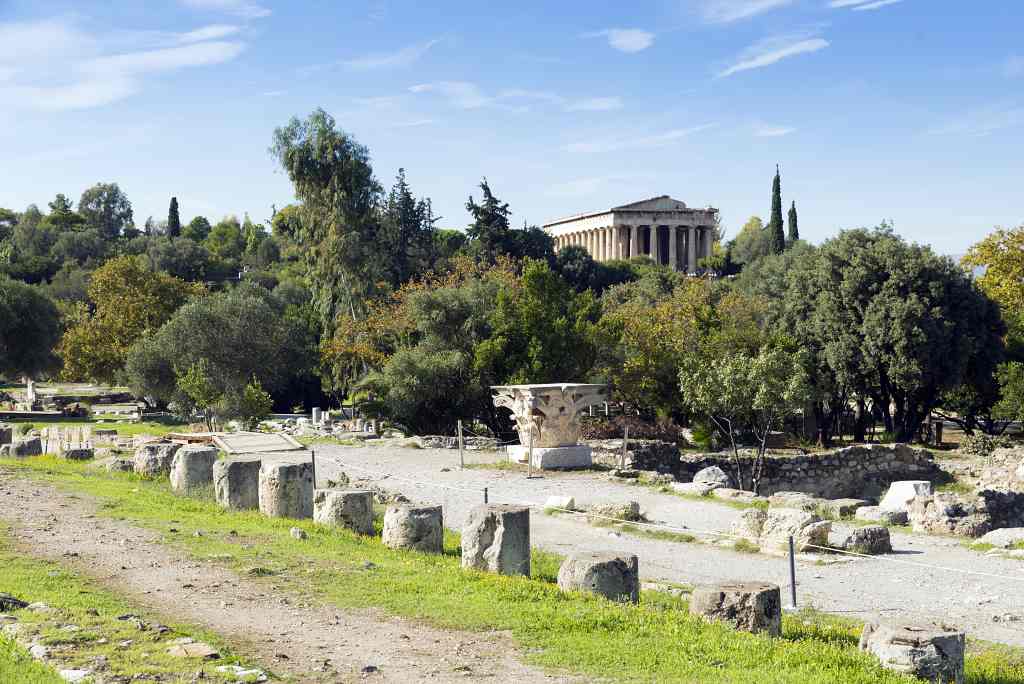
For more than 5,000 years the Ancient Agora was a lively meeting and gathering place. It was the artistic, spiritual, and commercial center of the city and the focus of its public and economic life. The Ancient Agora was a dynamic place with courts of law, a gymnasium, various temples, and five stoa, which were broadly covered walkways.
10. Temple of Hephaestus
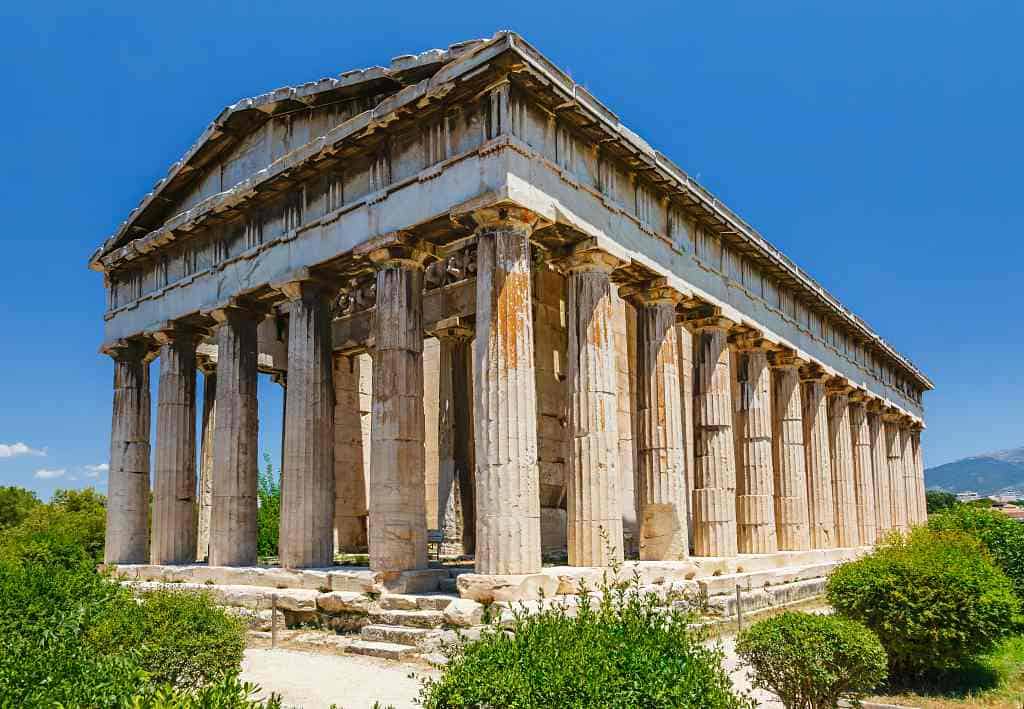
The Temple of Hephaestus is the best-preserved ancient temple in the world. The temple stands just northwest of the Ancient Agora and has been well preserved as it was used continually as a place of worship between the 7th century BC and 1834. Visit the temple first thing in the morning, as it looks particularly beautiful and stands as a testament to the sophisticated world of the Ancient Greeks.
Tickets: Included in the Ancient Agora ticket and the combined ticket.
11. Stoa of Attalos
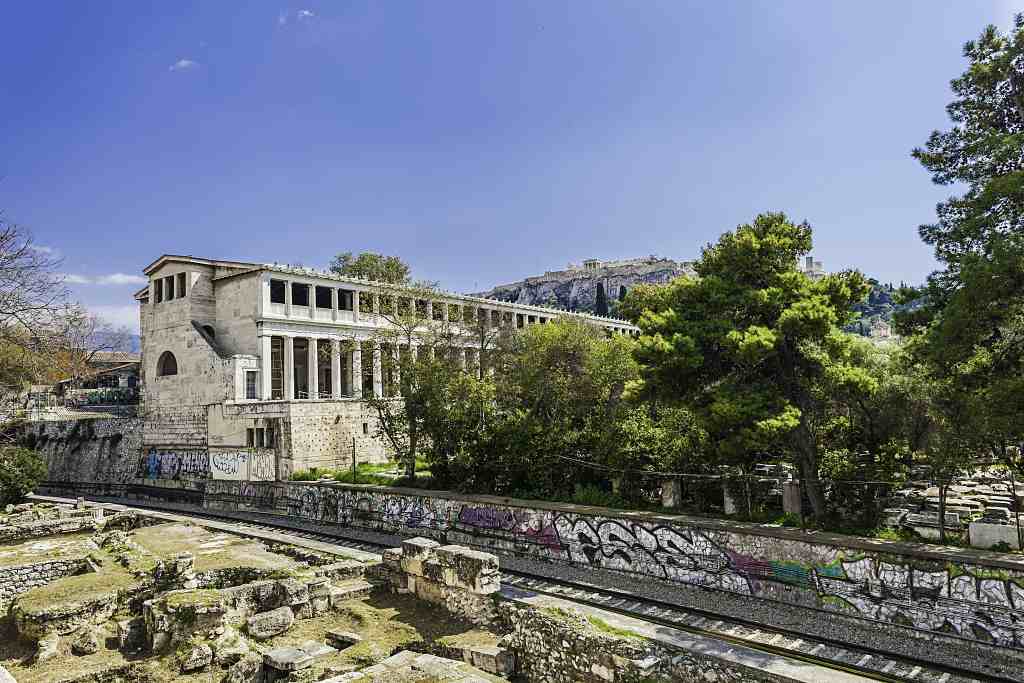
The Stoa of Attalos is an impressive covered walkway that lies within the Ancient Agora archaeological site. When it was built in about 150 BC, the Stoa was one of the largest and most elaborate buildings in Athens.
It was built on two floors, with marble floors and columns with 21 shops on each floor. It was a popular place for merchants and local dignitaries to meet. The Stoa of Attalos was reconstructed during the 1950s using the original foundations and materials. The Stoa now contains the Agora Museum.
Tickets: Included in the Ancient Agora ticket and the combined ticket.
12. Roman Agora & Tower of the Winds
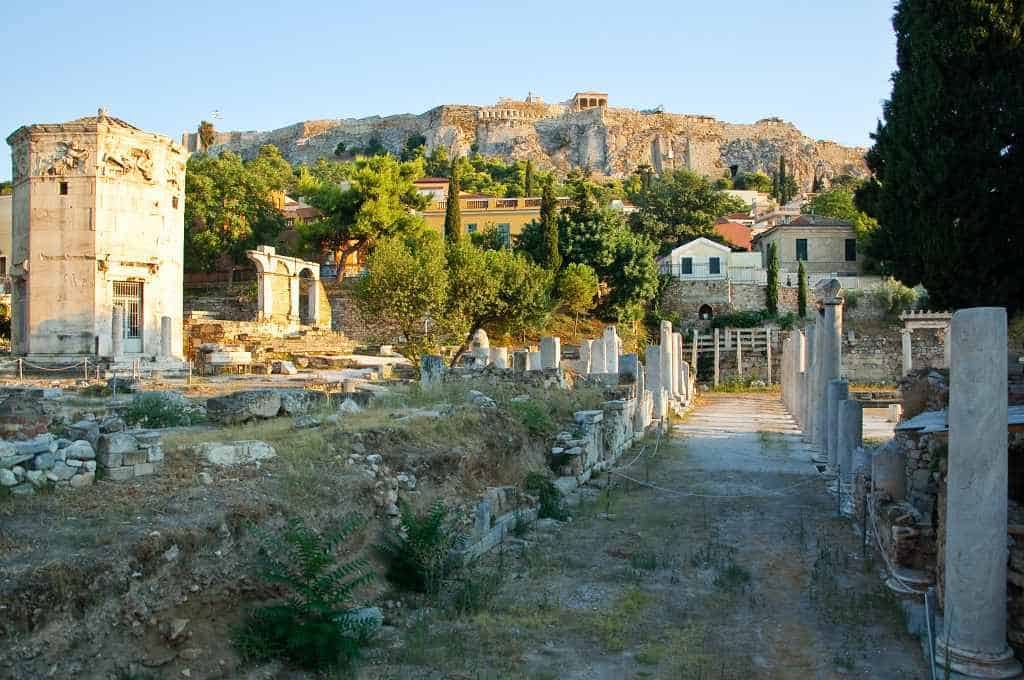
The Roman Agora, north of the Acropolis, and the focus of public life in the city. It was a large courtyard area built in the 1st century BC, surrounded by willow and poplar trees for shade and decorated with water fountains and statues.
There were merchants selling their goods as well as bankers, artists, and philosophers The Tower of Winds stands close by and is an octagonal structure made in Pantelic marble. The tower was built by the astronomer Andronicus and used to predict the weather, using a sundial, weather vane, water clock, and compass.
13. Athens Lysicrates monument
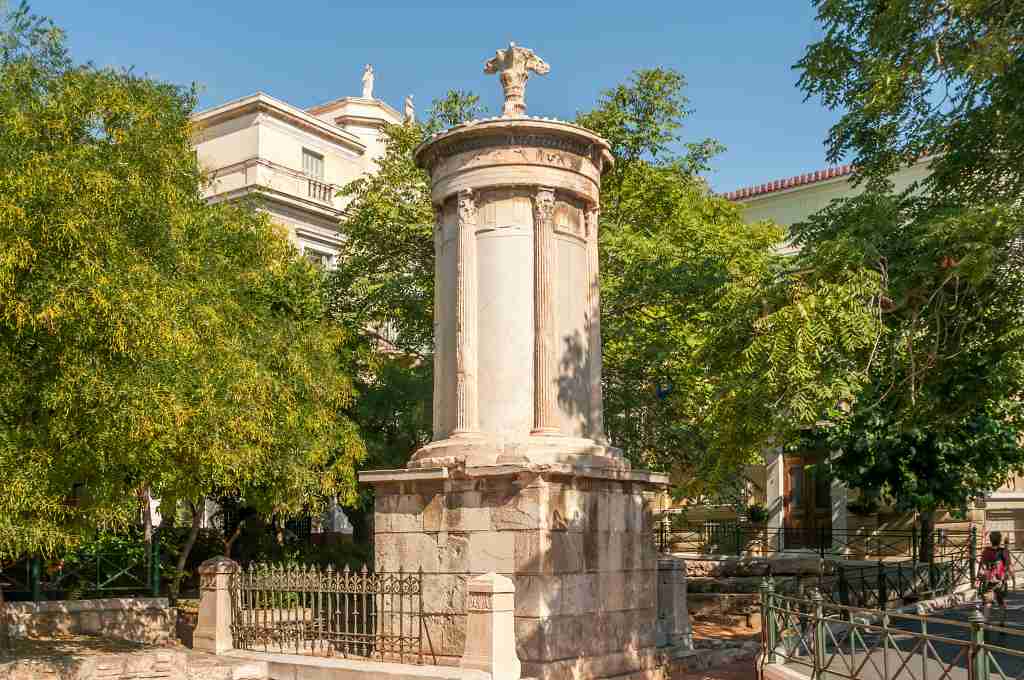
This well-preserved choragic monument stands near the Acropolis Museum. There were many similar monuments across ancient Greece and they were used for displaying trophies. The Lysicrates monument was named after the wealthy Athenian who funded its construction and is an early example of the Corinthian architectural style.
The prizes were awarded to the coregos (leader of the chorus) and this monument was once topped by a large bronze tripod that was the first prize in the Festival of Dionysia.
14. Temple of Poseidon, Sounio
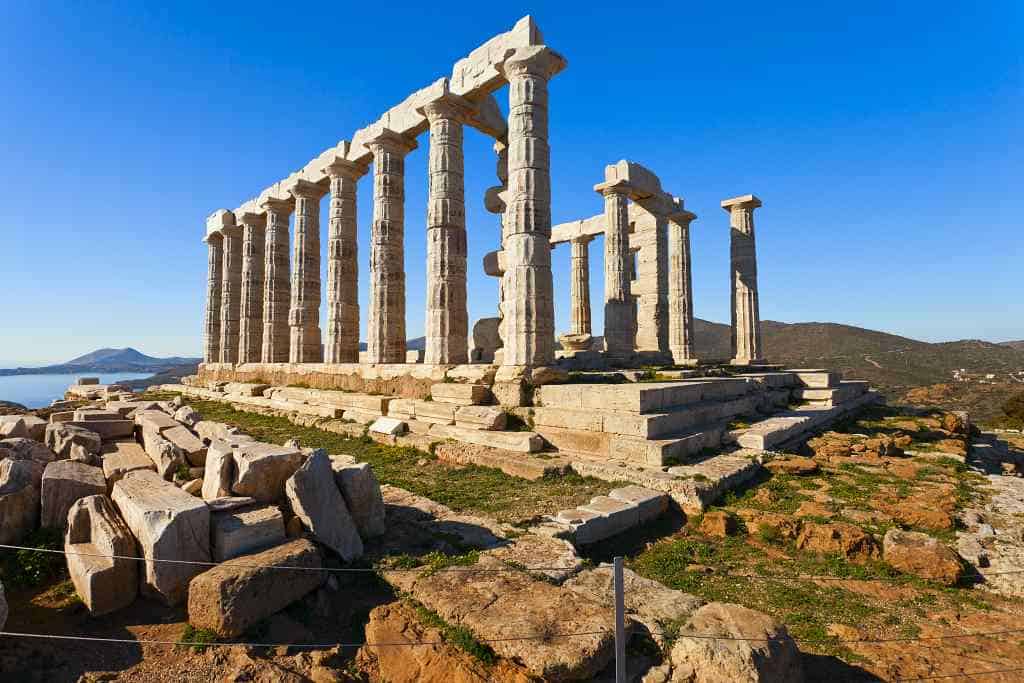
The Temple of Poseidon is situated on a clifftop that plunges into the sea at Cape Sounion. This is the perfect setting for a temple built in honor of the god of the sea. The temple was built in 444- 440 BC, using locally mined marble in the Doric style.
There were 13 columns along each side and six at each end. 13 of the columns are still standing. Those sailing to Athens could see the gleaming white columns from a great distance.
The easiest way to visit the Temple of Poseidon in Sounio is by a guided tour. This one is my favorite:
Cape Sounio: Sunset tour from Athens

